
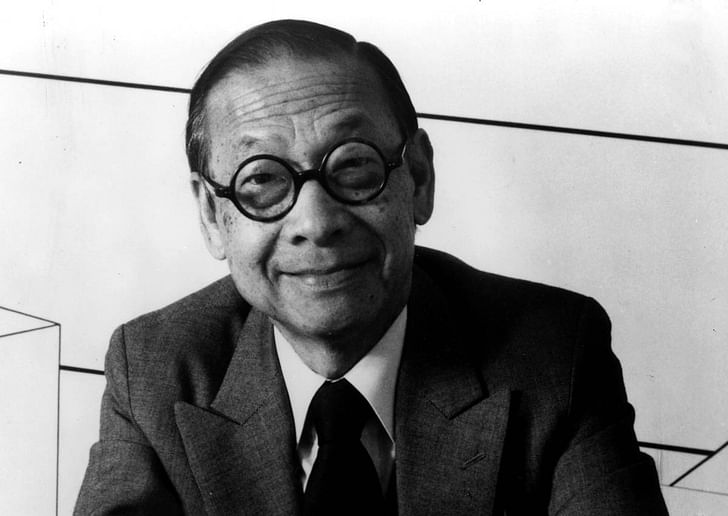
On April 26th, I.M. Pei turns 100 years old. From his former colleagues to Sir Norman Foster to the architect himself, here are remembrances, anecdotes, and a general celebration of the genius of one of the masters of architecture.
I.M. Pei is one of the warmest yet simultaneously successful architects of the last century, a rare feat in a profession where ego and aesthetic visions clash as a matter of course. At a Harvard GSD centennial celebration of Pei held this March, Bart Voorsager remembered Pei for his "amazing emotional antenna" former colleagues, including Bart Voorsager, remembered Pei for his “amazing emotional antenna,” while former partner Henry Cobb shared pictures of Pei attending a birthday party, explaining “how fun it was to be with Eileen and I.M.” Pei’s emotional legacy is important not only because he has created so many warm memories, but also because it enabled him to form very productive relationships with clients. Instead of taking a cold or distant approach to differing ideas, Pei has always believed in meeting every perspective with an open mind and a wry smile. This has resulted in enduring architectural masterpieces that remain refreshing and vivid decades after their official openings.
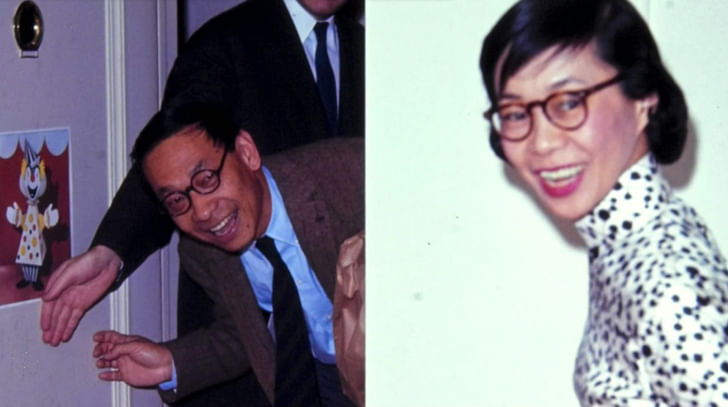
"'You need to choose your patrons, your clients,'" was something that Pei made very clear to former colleague and Fragrant Hill designer Calvin Tsao, as Tsao related at the GSD event. “And that was, you know, the seed for my career. But I always wondered why there was not more coverage of I.M. in terms of what he’s done. His work is worldwide and recognized but he remains something of a sphinx. He moved way beyond the edifice, the entire environment, context, history, both the historical as well as the contemporary, the scholarship as well as the pragmatic and the poetic. He’s always looking at things in between, and that’s why it’s so hard to put him into a category. He’s not an academic or a conceptualist or a pragmatist, because he’s all of that, all at once...it’s his way with people. I can’t say whether he’s my mentor or my boss or whether he’s an inspiration, because he gets inside of you.”
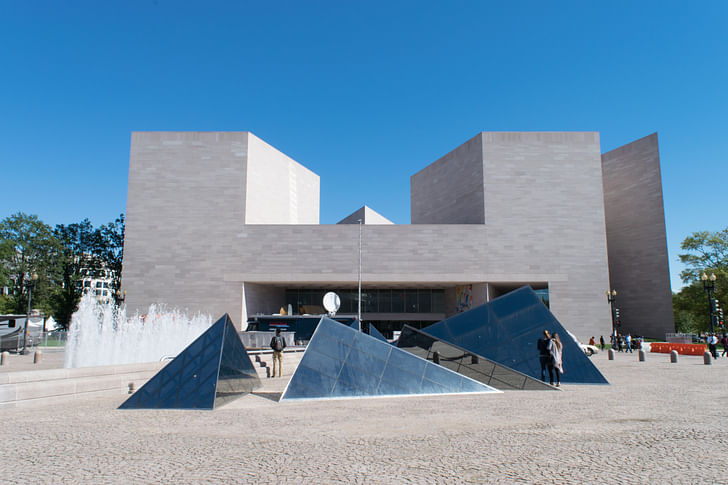
Voorsager illustrated Pei’s remarkable way of getting inside of people by telling an anecdote about working in Pei’s office and presenting a design for a marble boardroom table to clients who were not particularly interested in the high cost of the material nor the potential for their pens to break while they were writing on its surface. The design team, defeated, regrouped and later presented a different design that incorporated a rare wood to help prevent pencil breakage. This time, Pei was in the meeting. The client said to Pei that he didn’t want the wood, and Pei asked him kindly what material he would prefer. “Marble,” the client said, at which point Pei reintroduced his original design concept, explaining that it would be more expensive. The client agreed. The way Voorsager tells it, it was Pei’s kindness that ultimately helped sell the design. ...it was Pei’s kindness that ultimately helped sell the design
Perhaps it is this “ventriloquistic ability to put the words into the client’s mouth,” that explains why his phenomenal built work continues to resonate so powerfully with those who encounter it. While often employing abstract forms, a certain warmth and playfulness in the work always emerges, to the point that some structures—like sections at the National Gallery of Modern Art—have been gradually blackened by the touch of millions of admiring human hands.
Pei’s spectacular energy is also a constant thread among those who have met him. The executive producer behind the film I.M. Pei: Building China Modern Eugene Shirley recalls traveling to China with Pei to document the process behind the Suzhou Museum in 2002. Shirley says, “I remember flying 16 hours to meet up with him in China—arriving at approximately the same time he did—only to find our crew, in their 30s, 40s and 50s, running throughout the day to stay up with him, when he was in his late 80s. It seemed he had extraordinary energy.”
Although Pei’s wife Eileen died in 2014, Henry Cobb, Pei’s partner for nearly six decades, is still practicing in the firm they started together. “I don’t think it’s possible to get into the chemistry of a partnership,” Cobb explained of his and Pei’s working relationship at the GSD event. “But one of the extraordinary things about our practice, and it very much starts with I.M. Pei personally, is the passionate pursuit of the conceptual possibilities, the technical challenges, and the actual challenges in execution of reinforced concrete. There was a belief system operative which we shared, and that’s what made it possible to have a design firm with several different partners, because there were shared beliefs and one of those beliefs was in the importance of pursuing the craft and technology of building a building.” Pei's is "not a sensibility that tolerates imperfection"
It’s only partly a function of Pei’s age that his peers are rare. Sir Norman Foster, when asked to comment for this piece on Pei’s legacy, stated, "I.M. Pei is a true master of monumental modernism. A commitment to the purity of form is a strain that flows through his life's work—from the angular marble structure of the East Building at the National Gallery of Modern Art, to the delicate glass and metal tracery of the Louvre Pyramid extension, which has stood the test of time to become one of Paris' most cherished icons. He is one of the ’greats’—an inspiration—and I am delighted to join with my colleagues in wishing him a happy 100th birthday with many happy returns to come."
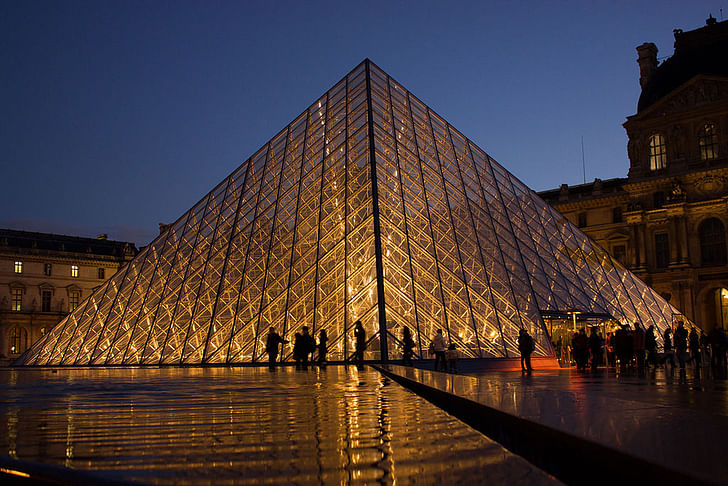
As Henry Cobb puts it, Pei’s is “not a sensibility that tolerates imperfection.” And yet, his sensitivity to the intangible vicissitudes of human nature seem to define him as much as the iconic edges of his best known works. This untrammeled delight in people and brilliantly executed work comes through powerfully in an interview where he discusses the work of Louis Kahn for the film My Architect: A Son’s Journey. When asked to contrast his and Kahn’s relationships with clients, Pei says “I’m a little more patient, perhaps because I’m Chinese. Let’s say if a person did not agree with me, I’d let it pass. And I’ll come back another day.”
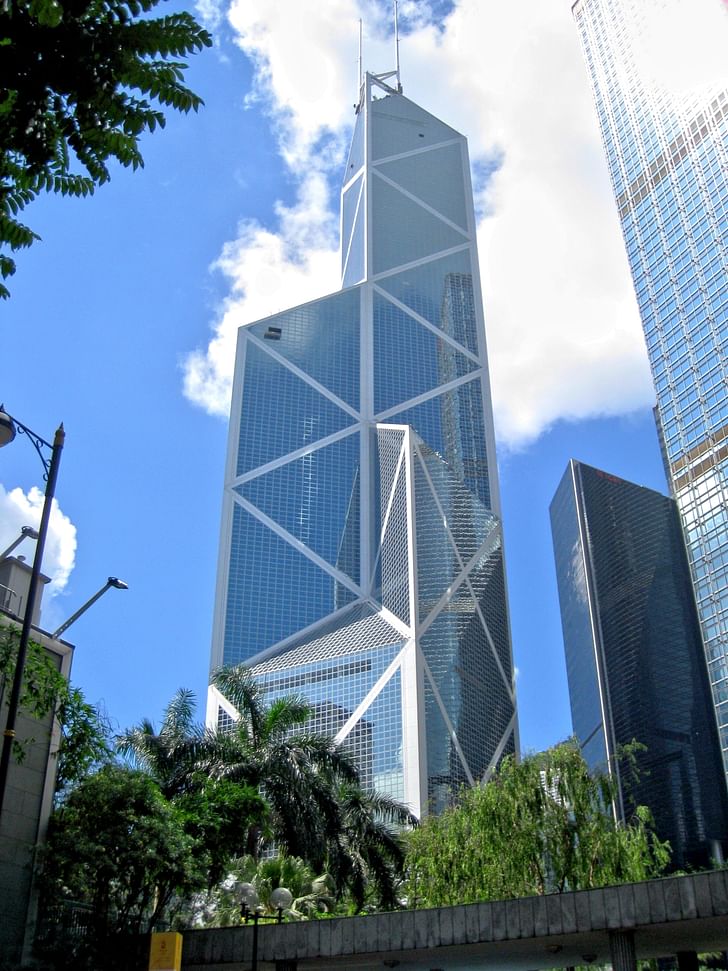
When Kahn’s son states that Pei is far more successful than Kahn was because he has built more buildings, Pei pauses and smiles, and then defines his version of success. “Three or four masterpieces is more important than 50 or 60 buildings. Quality, not quantity. Architecture has to have the element of time. How can you judge a work today, let’s say a work by one of these modern architects you know about, that’s exciting and wonderful? What will happen to it 20, 50 years later? That’s the measure.”
Julia Ingalls is primarily an essayist. Her work has appeared or is forthcoming in Slate, Salon, Dwell, Guernica, The LA Weekly, The Nervous Breakdown, Forth, Trop, and 89.9 KCRW. She's into it.
No Comments
Block this user
Are you sure you want to block this user and hide all related comments throughout the site?
Archinect
This is your first comment on Archinect. Your comment will be visible once approved.